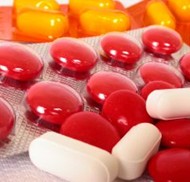Treatment For Pelvic Inflammatory Disease
Medications And Surgery For PID
![]()
Treatment For Pelvic Inflammatory Disease |
 |
Treatment For PIDContents • How Is PID Treated? |
|
Return To Main Article: Guide To PID |
How Is PID Treated?
If there is evidence of chlamydia or gonorrhea (both are STDs) you will be started on oral antibiotics immediately - even before the test results come back. Your partner will also need to be treated to prevent the infection passing back and forth (even if he shows no signs). As it is not always possible to identify which organism is causing a PID infection (there may be more than one), you are likely to be given at least two types of antibiotics, one of which may be injected. The antibiotics will not reverse any damage already done to the reproductive organs, so the sooner PID is treated the better. Hospitalization may be required if you are showing severe symptoms of pelvic inflammatory disease (such as vomiting and fever), if you are pregnant, or cannot take oral medications. Teenagers and women over 35 are more likely to be routinely treated as inpatients in hospital.
You will be prescribed two or more antibiotics to cure any suspected bacterial infections. If you are hospitalized one antibiotic will be given intravenously for 24 hours and the other(s) taken orally and continued for 14 days. All prescribed treatments will also deal with any underlying gonorrhea or chlamydia infections. If an IUD device is present, it should be removed after the initiation of antibiotic treatment.
What If Antibiotics Don't Work? Up to 80 percent of patients respond within 3 days of therapy showing significant improvement of symptoms (reduced abdominal tenderness for example). Women who don't improve by this stage are usually hospitalized for additional diagnostic tests (read pelvic inflammatory disease diagnosis) and surgical intervention. Laparoscopy (keyhole surgery, a procedure that allows a surgeon to view and sometimes treat abdominal organs without making a large incision) may be requested to identify an alternative diagnosis (such as endometriosis or ovarian cysts). If a ruptured abscess (associated with PID) is discovered it can be drained in the same procedure. The advantage of laparoscopy is that is affords visualization of the pelvis and bacterial cultures can be taken for analyses. However, it is a costly procedure, and is not always made available to PID patients. It also requires general anesthesia. Laparotomy is an even more invasive operation - with this procedure doctors make a larger incision to access the abdominal cavity. It is usually reserved for medical emergencies - for example, where an abscess has ruptured but did respond to laparoscopic drainage. If infections recur, a unilateral or bilateral salpingo-oophorectomy or hysterectomy may be recommended (see procedure pictures). The exact treatment however will depend on the woman's desire for fertility. If you receive a PID diagnosis your partner should be examined by a doctor. Although he may not have symptoms, he can still be infected with the same bacteria that caused your PID (usually gonorrhea or chlamydia). He will be given antibiotics if you have had sexual contact within the past 60 days from the onset of your symptoms. Both of you should refrain from sexual intercourse until therapy is completed and symptoms have completely disappeared. There is a high recurrence rate associated with PID. One study showed the rate at between 20 and 25 percent within 7 years. The most serious complication is a tuboovarian abscess (a mass containing pus which forms on the fallopian tubes or ovaries) because if it ruptures it can lead to septic shock and death. In one third of cases, even after treatment, chronic pain develops. The risk of infertility increases significantly with each recurrent bout of PID; as does the risk of ectopic pregnancy. The risk of ectopic pregnancy after one bout of PID is 1:15, after two is 1:6 and after 3 is 1:3. Ultimately there is no ‘cure’ for PID because re-infection is always possible. There is some evidence that each bout of PID weakens the pelvic organs, making them more prone to future infections.
|
| Related Articles on PID
For more advice, see the following: • Causes of pelvic inflammatory disease: STDs to vaginitis. Back to Homepage: Womens Health Advice |
|
WOMENS HEALTH ADVICE: ABOUT Pelvic Inflammatory Disease |